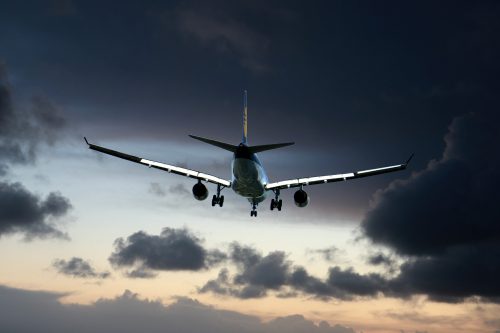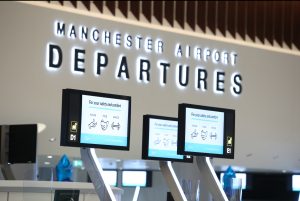Warning that airports stand to lose at least £2.6bn in revenue this summer

UK airports could lose at least £2.6bn in revenues this summer due to continued restrictions on international travel.
That is the warning from the Airport Operators Association (AOA).
Earlier this year, Manchester Airports Group issued financial forecasts, based on two scenarios, that could see it suffer from a prolonged impact on international flights.
Now, the AOA says that, with the Government taking what many see as an overly cautious approach to reopening international travel and with the current green list representing only 1.7% of 2019 passenger numbers, there is a real risk that summer 2021 is as bad or worse than summer 2020.
In 2020, there were significantly more countries on the travel corridor list compared with what is expected for summer 2021 under the current traffic-light system.
Thanks to the larger numbers of countries with a travel corridor, passenger numbers peaked at 22% of 2019 levels in August 2020.
Even with the more liberal travel approach in 2020, UK airports lost out on £2.6bn revenue between April to September 2020.
With passenger numbers expected to be at best similar, but most likely worse, airports stand to lose at least another £2.6bn in revenue again this year.
AOA chief executive, Karen Dee, said: “The Government’s overly cautious approach to reopening travel has real world consequences for the 1.6 million jobs in the UK aviation and tourism industries that rely on aviation having a meaningful restart.
“Unless the Government makes a meaningful restart of aviation possible by extending the green list at the next review, moving to rapid and affordable tests for returning travellers and following the examples of the EU and the US by reducing restrictions on fully vaccinated passengers, aviation is in for an extremely difficult summer.”
She added: “Airports have suffered blow after blow since the start of the pandemic. If the Government decides it cannot reopen travel more meaningfully, then they should stand ready to give substantial financial compensation to airports and others in aviation and tourism.
“As airports remain open for critical services, support should include operational costs, such as policing, air traffic and CAA regulatory costs, and extending business rate relief in full until the end of the tax year.
“With the rest of the economy having a real opportunity to return to some normality, jobs in businesses across the economy that need air connectivity for their success are at risk. The Government cannot afford to let those go.”
The region’s main airports have suffered during the enforced border closures due to the pandemic.
Last month John Irving, chief executive of Liverpool John Lennon Airport, said regional airports such as his are currently operating at levels that are “not sustainable”.
He revealed that some flights are taking off with as few as six passengers on board.
In an address to the Liverpool City Region Visitor Economy Panel, organised by the Liverpool BID Company, Mr Irving said: “The recovery in aviation will lie solely on the Government. We aren’t really on a roadmap like other businesses and sectors. We have no guidelines on when we will be back.
“May 17 was the official restart of international travel, but that wasn’t really the case. We had 46 flights go out last week, but this is compared to hundreds last year.”
He added: “The information from the Government is really unhelpful. We have flights going out to some destinations with just six or seven people on them. It’s just not sustainable.”
Earlier this week, Singapore Airlines announced the return of its non-stop Manchester-Singapore route starting next month.
But this represents a rare shaft of light in a gloomy scenario for the airport under current travel restrictions.
Manchester Airport’s parent group, MAG, issued guidance in April based on two scenarios for recovery from the pandemic involving a resumption of travel from June, and a resumption from September this year, which would mean the loss of lucrative summer holiday traffic.
It said scenario one depends on the continuing successful roll-out of the vaccine and easing of restrictive measures in the UK and around the world.
It estimates a 60% reduction in passenger volumes in financial year 2022, then a return to 84% of customer levels in FY23, and back to pre-COVID levels in FY24.
MAG predicts an EBITDA of £45m for FY22 and a liquidity position of at least £360m over the next two years.
The second, more gloomy scenario, is based on a delay to lifting restrictions and the vaccine roll-out, caused by a vaccine resistant variant.
This could mean international travel isn’t sanctioned until September this year, which would involve passenger volumes of just three per cent for the group in June, five per cent in July to September, and then 41% from September.
Overall, this would lead to a 75% reduction in FY22 passenger volumes, which are expected to then recover to 84% of volumes by FY23.
The second scenario predicts a £31m negative EBITDA in FY22, and liquidity of £240m over two years.
However, the group reiterated that it is in a “very strong position” once international travel restrictions are lifted.








